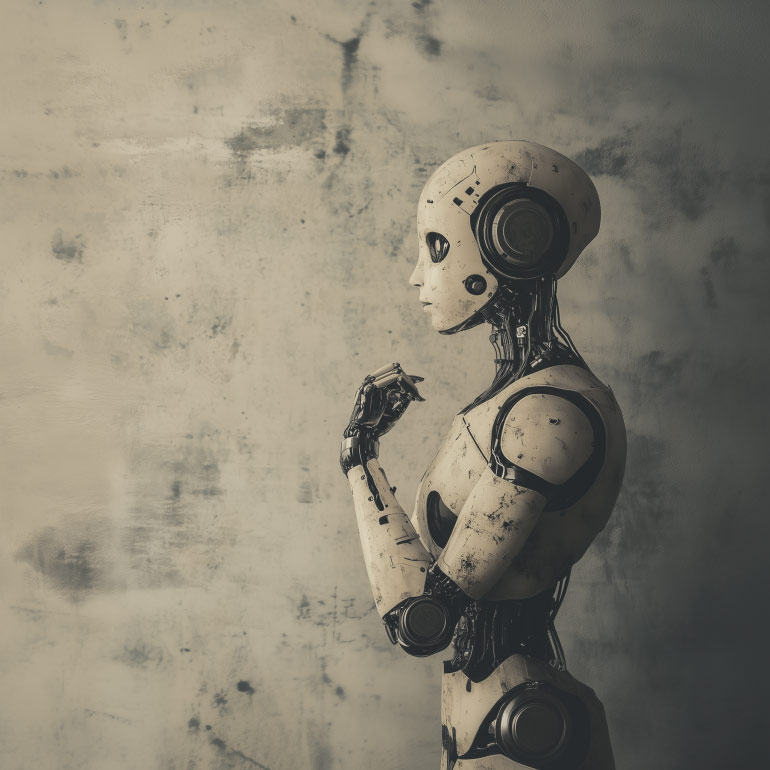You’ve got to hand it to Sam Altman. Most of us use our eyes to find our way to the fridge at night. He wants you to use yours to unlock a new global economy.
Welcome to Worldcoin: a biometric-based, blockchain-backed identity project that looks like the lovechild of George Orwell and Elon Musk. With a gleaming chrome orb that scans your iris and a promise to redistribute wealth in a world dominated by AI, Worldcoin is either our salvation or a Silicon Valley fever dream with a God complex.
Let’s dive in.
Proof of Personhood: Because CAPTCHA Isn’t Cutting It Anymore
The rise of AI means your next deepfake Tinder match could be a bot with better chat than your ex. Altman’s answer? “Proof of Personhood” – a way to distinguish you from the swarm of machines. Enter the Orb: a device that scans your iris, generates a unique code, and (theoretically) lets you prove you’re not a robot.
This isn’t just for fun. The Orb forms the backbone of World ID – a privacy-preserving, decentralised digital passport. Verified once, your biometrics get turned into cryptographic keys (not stored as images, so they say), and you’re now part of humanity’s blockchain-based club.
It’s clever. It’s also a bit creepy.
Three Pillars and a Token Dream
Worldcoin rests on three shiny, futuristic pillars:
- World ID: Your unique, anonymous proof of humanity.
- World App: A wallet-meets-superapp that lets you spend, save, and possibly WhatsApp your grandma some crypto.
- WLD Token: A shiny incentive for signing up and a long-term candidate for funding Universal Basic Income (UBI) in a post-job, AI-heavy world.
It’s vertical integration at its finest. But to critics, it’s vertical control with a smile and a privacy policy.
But critics argue that this policy could be little more than window dressing. With control of the Orb hardware, the World ID infrastructure, and the biometric database, Worldcoin’s creators hold unprecedented power over who is ‘verified’ in this new digital society. That level of centralised control creates a tantalising opportunity for abuse: access could be manipulated, data leveraged for surveillance, or even monetised in ways users never agreed to. In the wrong hands—or even under pressure from powerful actors—this system could be weaponised to marginalise, exclude, or manipulate entire populations. When identity becomes programmable, so does access to everything tied to it.
Global Vision, Global Problems
Altman wants everyone onboard: rich or poor, North or South, verified via Orb and rewarded with WLD tokens. That’s ambitious – and deeply problematic. From Nairobi to Buenos Aires, regulators have sounded the alarm. Spain and Portugal swiftly banned the project, citing opaque data practices and potential GDPR violations. Kenya’s High Court went a step further, declaring the entire operation unlawful for failing to meet data protection standards, accusing it of using financial incentives to coerce participation.
The criticism isn’t just legal; it’s philosophical. At its core is a fear that Worldcoin could become a centralised, biometric honeypot – a high-value database of irises waiting to be hacked, exploited, or repurposed. And even if you trust the intentions of its creators today, what happens with the next leadership team? Or worse, the next firmware update? One misstep could turn this global ID experiment into the ultimate surveillance apparatus, making Orwell’s telescreens look quaint by comparison.
Hype or Hope?
In theory, Worldcoin solves real problems:
- Stopping bot swarms from gaming crypto airdrops.
- Fairer governance in decentralised systems.
- Real-world UBI distribution, at scale.
But the execution? That’s still murky. There’s a tension between privacy and practicality. Worldcoin claims it deletes raw images and uses zero-knowledge proofs. Great on paper. But the public still has to trust a private company…with a vault of unchangeable biometric signatures.
We’re talking blockchain meets Black Mirror.
The Bottom Line
Worldcoin is either the most daring experiment in digital identity since the invention of the passport – or a colossal misstep that future generations will study in cyber ethics class.
Interestingly, just as Sam Altman is pushing biometric ID through a chrome Orb, UK Labour leader Keir Starmer recently announced plans to reintroduce digital ID cards. His proposed system aims to curb illegal immigration and improve access to public services. While Starmer’s vision is rooted in state governance and traditional civic accountability, Altman’s is global, decentralised, and (conveniently) owned by a private company. One sees ID as a tool of the state; the other, as a building block of a new digital economy.
The parallel? Both acknowledge the future hinges on proving who we are. The difference? Who holds the keys – government or Silicon Valley, and to be honest I’m not sure about either.
It’s not the tech that will make or break it – it’s trust. If Altman can convince a sceptical world to literally hand over their eyes for a token, he may just get his UBI-funded utopia. If not? Well, it’ll be a very expensive proof of concept in how not to run a decentralised identity network.
One thing’s for sure: if you ever see a silver Orb at your local shop, you’ll know exactly what it wants. And it’s looking right at you.
Which raises a question: is anonymity even an option anymore? In a world increasingly built on verified identity, choosing to remain anonymous might no longer be a neutral stance – it could become a barrier to accessing services, opportunities, and even communities, just like not having a smart phone now. But is that worse than handing over your biometrics to a private entity? That’s the dilemma we now face. Whether we opt in or stay out, it seems the age of digital identity is here, and the price of participation is, quite literally, written in your eyes.



